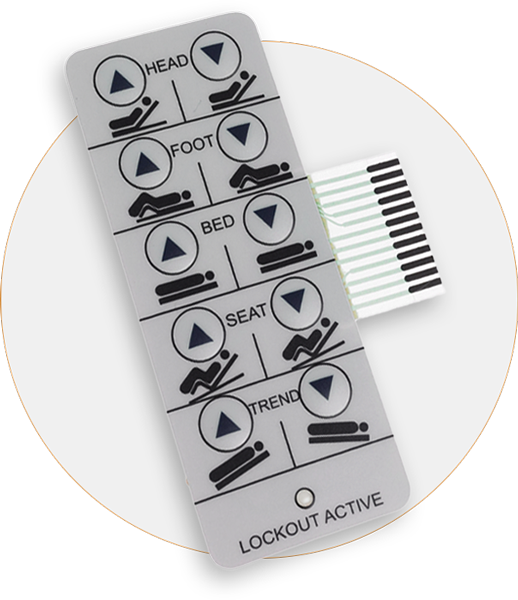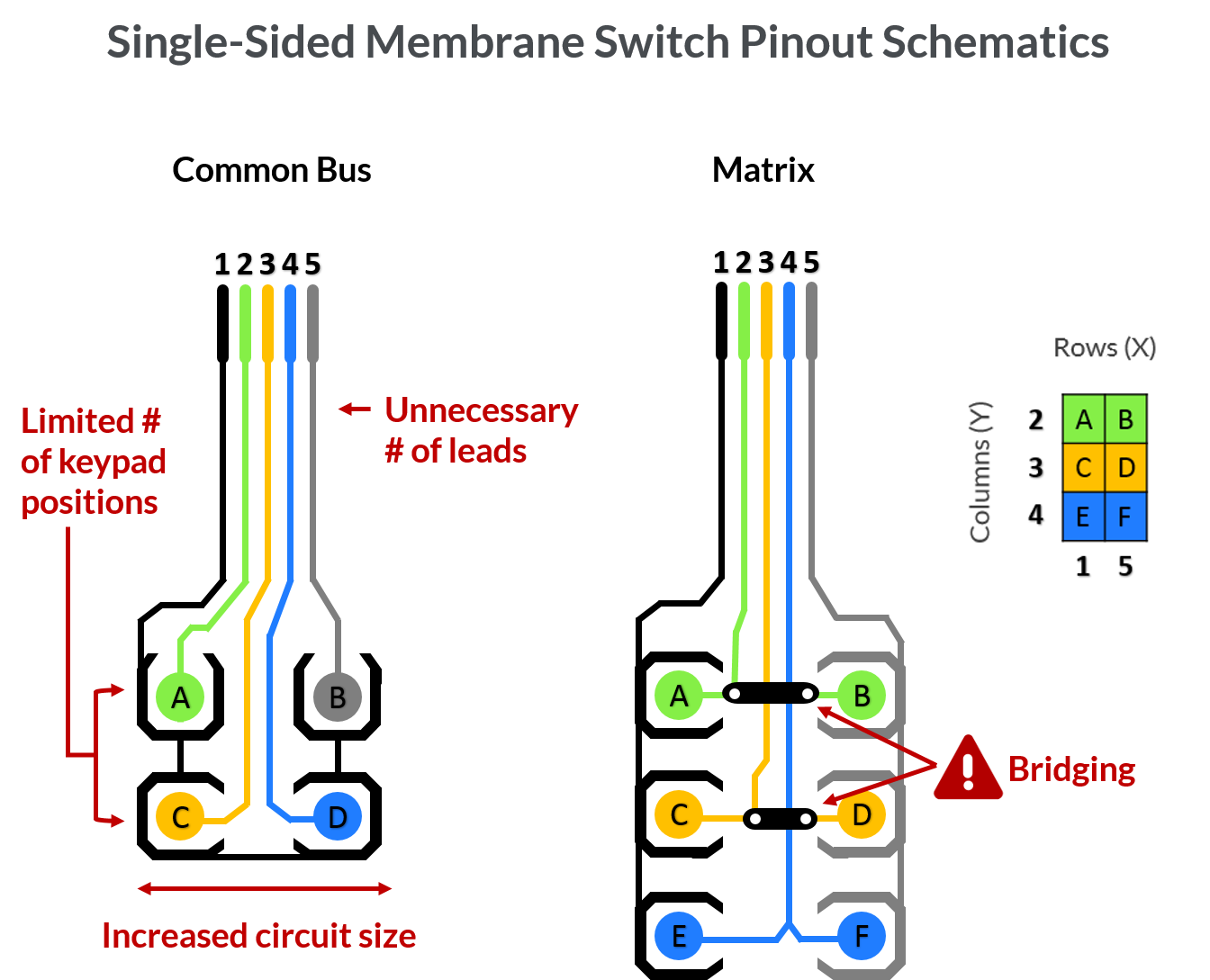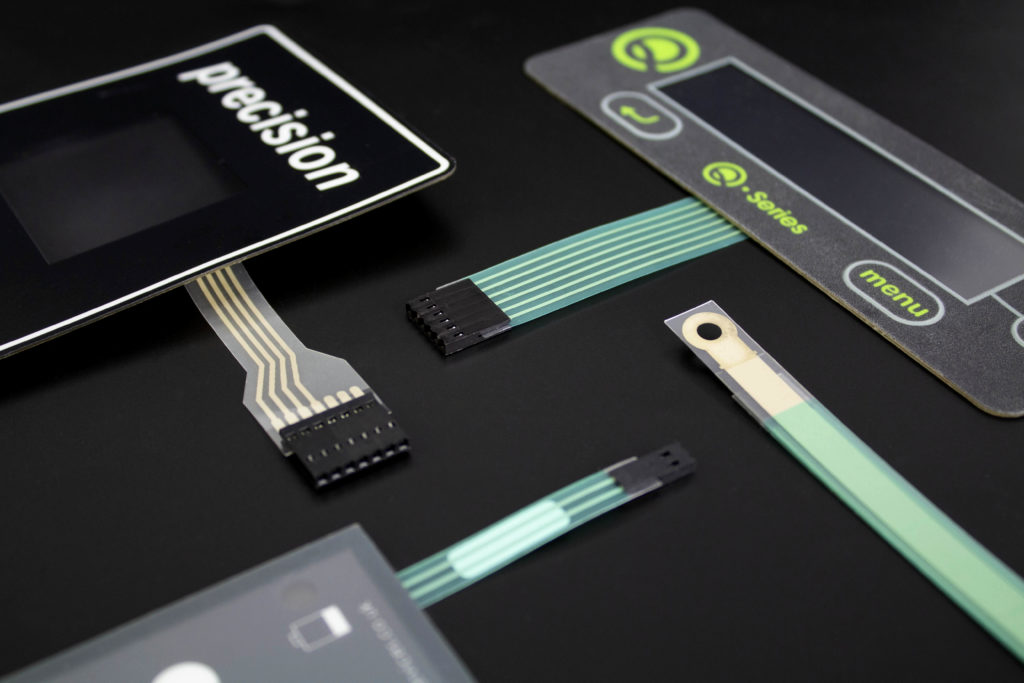Recognizing the Relevance of Membrane Switches in Interface
Membrane switches are integral parts in the layout of efficient interface, helping with not only capability yet likewise enhancing visual appeal and individual communication. Their one-of-a-kind functions, such as resistance to personalized layouts and ecological factors, make them appropriate for a diverse array of applications across numerous markets. As we explore the different advantages and future trends related to Membrane modern technology, it ends up being clear that these switches are greater than just components; they stand for a merging of development and usefulness. The ramifications of this technology on customer experience are worth taking a look at better.
What Are Membrane Buttons?

The spacer layer, which has sticky homes, permits the splitting up of the circuit layer from the overlay, making certain that the button continues to be in a non-activated state until pressed. When stress is put on the overlay, it compresses the spacer layer, connecting the void and completing the circuit in the underlying layer. This design not only minimizes the physical space required for standard mechanical buttons yet additionally improves the toughness of the tool, as Membrane switches are normally resistant to dirt, moisture, and other environmental elements.
Typically located in applications varying from customer electronic devices to medical tools, Membrane switches are integral to modern innovation, supplying a efficient and straightforward user interface that aligns with contemporary layout needs.
Advantages of Membrane Switches
While many switch modern technologies exist, Membrane Switches deal unique benefits that make them particularly desirable in various applications. One of the main advantages of Membrane switches is their small design, which permits space-saving implementations in tools where genuine estate is restricted. Their thin profile not only enhances visual charm but likewise helps with light-weight construction.
One more substantial advantage is their resistance to ecological aspects. Membrane switches are usually sealed versus wetness, dust, and pollutants, making them optimal for usage in demanding atmospheres, such as medical tools and commercial devices. This longevity extends the life-span of the switch, lowering maintenance expenses and boosting dependability.
In addition, Membrane switches can be customized to meet particular layout requirements, integrating special graphics and shades that boost user interaction. Their tactile feedback choices can also be tailored to offer an enjoyable user experience. In addition, Membrane switches are affordable, particularly in high-volume applications, as they can be generated effectively.
Applications in Various Industries

In the consumer electronics industry, Membrane buttons are prevalent in devices such as microwaves, cleaning machines, and remote controls. Their responsive comments and aesthetic choices enhance user experience while giving a sleek, modern-day appearance. Furthermore, automobile producers make use of Membrane switches in control panel controls and infomercial systems, where space is limited, and individual involvement is important.
Additionally, the industrial industry leverages Membrane buttons in control panels for equipment and tools, allowing for intuitive operation in typically harsh settings. Their resistance to chemicals and moisture ensures longevity and integrity in these applications. In general, the adaptability of Membrane Switches adds significantly to their extensive use, making them crucial in different technical domain names.
Design Considerations for Membrane Switches

When designing Membrane buttons, a number of essential considerations should be considered to ensure ideal performance and individual experience. The choice of materials is critical; selecting resilient, top quality substrates can boost the button's long life and resistance to ecological elements such as moisture and temperature changes.
Second of all, the layout of the visuals overlay need to focus on quality and convenience of use. Icons and text have to be understandable, and the design needs to promote user-friendly interaction (membrane switches). Furthermore, tactile responses is crucial; including a tactile dome or various other devices can boost the customer experience by giving physical try this website confirmation of activation
One more crucial element is the switch's electric efficiency. Designers need to make certain that the conductive traces are properly designed to lessen resistance and avoid signal interference. This entails examining the needed actuation pressure and making sure compatibility with the electronic parts they will certainly interface with.

Future Trends in Membrane Innovation
As modern technology continues to advancement, Membrane switches are poised to evolve substantially, driven by advancements in materials and manufacturing strategies. One arising pattern is the incorporation of sophisticated products, such as versatile substrates and conductive inks, which boost toughness and reduce the general weight of Membrane switches. These materials not just enhance the responsive reaction however also permit the layout of buttons that can withstand harsher environmental problems.
Additionally, the assimilation of touch-sensitive modern technologies is transforming conventional Membrane Switches right into even more interactive interface. Capacitive touch sensors embedded more helpful hints within Membrane button panels can give a more user-friendly and responsive user experience, aligning with the expanding demand for streamlined, modern designs in consumer electronics.
Additionally, developments in printing methods, such as digital and 3D printing, allow rapid prototyping and personalization of Membrane buttons. This adaptability permits manufacturers to react quicker to market demands and consumer choices.
Last but not least, sustainability is ending up being a considerable focus, with suppliers checking out eco-friendly materials and processes. As these patterns unfold, the future of Membrane modern technology assures enhanced capability, visual charm, and ecological responsibility, solidifying their function in innovative customer interfaces throughout numerous industries.
Verdict
In verdict, Membrane Switches represent an essential component in the layout of individual interfaces, incorporating performance with visual adaptability. As developments in modern technology continue, the advancement of Membrane buttons is anticipated to more improve individual interfaces, driving innovation and enhancing use in a significantly intricate technical landscape.
Membrane buttons are important components in the layout of reliable customer interfaces, promoting not just performance yet also improving aesthetic charm and customer interaction.Membrane Switches serve as a crucial part in different individual interfaces, facilitating a smooth interaction between customers and electronic tools.While various button modern technologies exist, Membrane Switches offer distinctive benefits that make them particularly preferable in various applications.In addition, Membrane switches can be tailored to satisfy specific style demands, including distinct graphics and colors that enhance user communication.In conclusion, Membrane Switches stand for a vital part in the design of individual interfaces, combining functionality with aesthetic versatility.